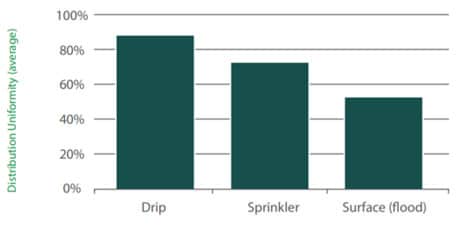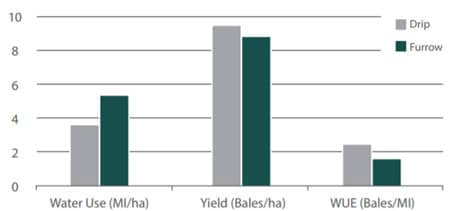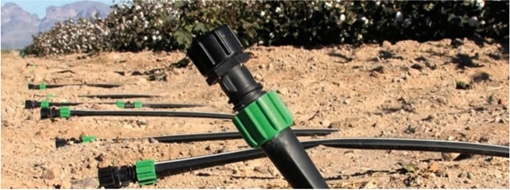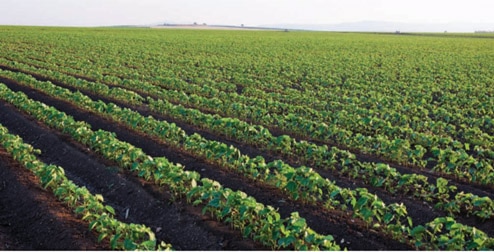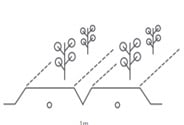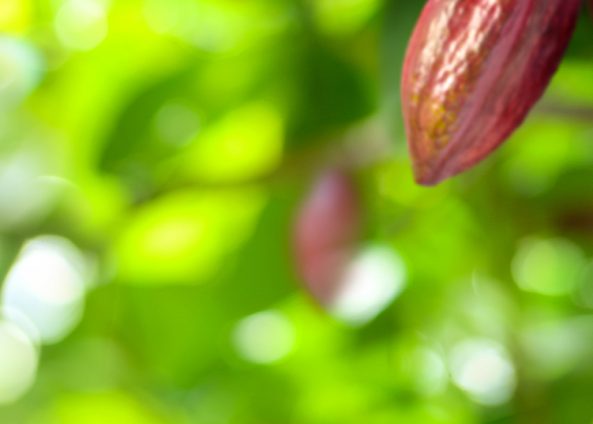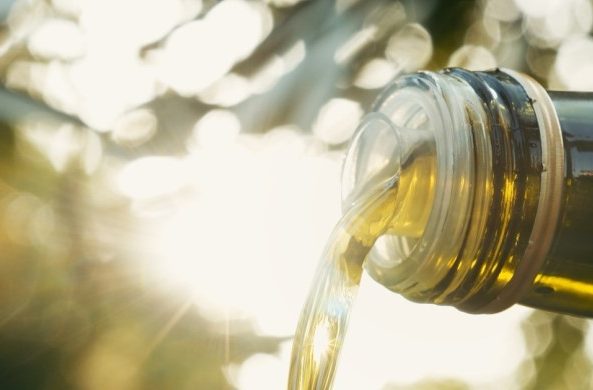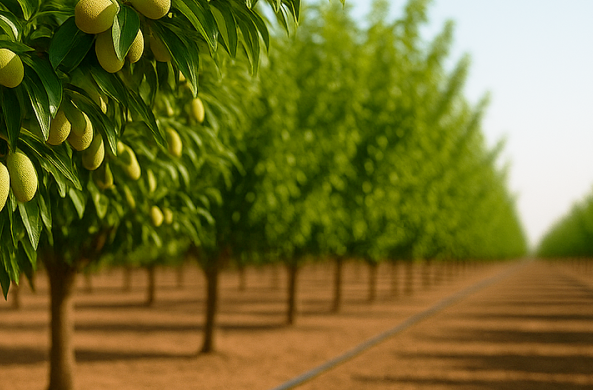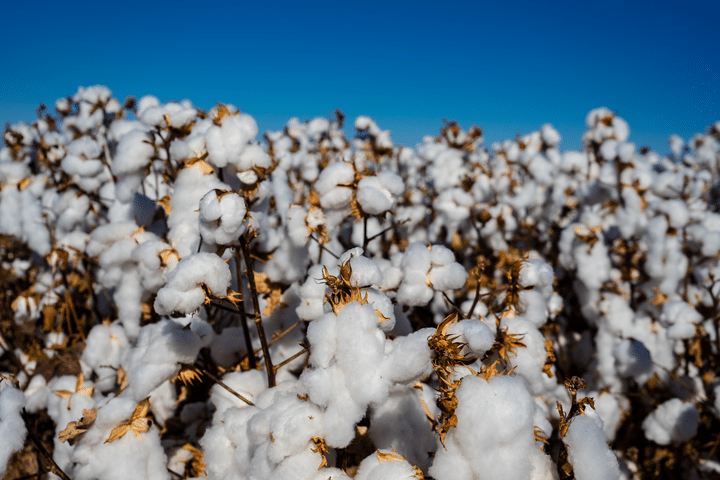
Increasing Total Irrigation System Efficiency – Cotton crop
A Solution to Increasing Your Yields
As a cotton grower, you know the key factors that drive your productivity are nutrients, disease control and of course, water. In many regions, cotton has an average water requirement of 650 mm. However to convert this available water into the optimum crop yield, you need an irrigation system that can precisely match your crop’s demand. This efficiency can be achieved through drip irrigation.

Take Control with Drip Irrigation
Irrigating under a flood regime typically involves irrigating every 10 days, where plants are inundated with water, then left to dry out. This method of irrigating produces alternate periods of high and low vegetative growth. Drip irrigation applies small volumes of water more frequently to optimize the correct plant stress levels and ultimately produce plants with a higher boll density than what could be achieved with flood irrigation. Drip provides the highest level of distribution uniformity (DU) achieving a DU of 93% or higher. DU is a measurement of the spread of irrigated water across a paddock. The higher the DU, the more even the spread of water to all plants. With paddock specific customization, Subsurface Drip Irrigation (SDI) is the best practice to optimize the wetting pattern for your plant’s effective root zone.
Comparison of Distribution Uniformity of Drip, Sprinkler & Flood
1 ABS, Water Use on Australian Farms, 20052 Harris, G. (2006). Subsurface drip irrigation SDI)- Advantages and Limitations. Department of Primary Industries and Fisheries.
Achieve Higher Yields While Saving Water
Case Study 1 –
Australian Cotton Lint Farms, Australia is a dry continent with limited seasonal rainfall. To optimize cotton production, Australian farmers need to increase their water use efficiency. A seven year study by the Department of Primary Industries and Fisheries found that drip irrigation systems yielded 8.73% higher than furrow while simultaneously reducing water use by 37.4%. Therefore if cotton is trading at $US452/bale, this trial demonstrates a benefit of $US325/ha, without considering the extra labor or fertilizer savings.
Source: Harris, G. (2006). subsurface drip irrigation (SDI) – Advantages and Limitations. Department of Primary Industries and Fisheries
Case Study 2 – Cotton Lint Yields in Texas
Source: American Society of Agricultural and Biological Engineers (2010).
Lower Fertilizer Costs with Drip Fertigation
One thing is for certain, fertilizer is expensive. Fertilizer efficiency is essential to today’s cotton grower. With a high nutrient demand, timing of nutrient application to cotton crop is essential. The solution: drip fertigation.
Benefits of Drip Fertigation
- Minimize nitrogen volatilization. Volatilization is the process where urea is converted into gas and lost in the atmosphere. Drip fertigation allows nitrogen to be applied directly into the soil solution close to the plants roots. This significantly increases the chance of nutrient uptake, minimizing volatilization.
- Minimize nitrogen loss by deep percolation. As drip fertigation is a very efficient process, a greater percentage of the applied nutrients is utilized, significantly reducing nutrient losses via leaching.
- Reduce number of tractor passes. With the option to apply nutrients through the drip line not only do you reduce labor and fuel requirements, you also help reduce total soil compaction.
- Increased uniformity of fertilizer delivery. Fertilizer can now be distributed to your total wetting area including areas close to fence lines and paddock boundaries.
- Soil aeration. Oxygen is injected into the soil profile at every start up benefiting crop health.
- Allows in-season application of P & K fertilizers. As these nutrients have a low mobility, application via fertigation has an increased efficiency rate. Delivery close to the cotton plant’s root system maximizes uptake.
Drip Irrigation Solution for Varied Soil Quality
Does water pool on the surface of your soil after rain, do you often have large quantities of run-off, or does your soil have a large clay content? If so, Subsurface Drip Irrigation (SDI) could be the answer to increase your cotton’s water availability. Drip irrigation is ideal for soil that has low infiltration rates by minimizing run-off and maximizing the amount of water and fertilizer applied to the active root zone. As subsurface drip irrigation is typically buried 30 cm deep, the water applied via irrigation does not rapidly run off the surface like flood would do, but rather is slowly applied directly to your cotton’s root zone, rapidly increasing the likelihood of uptake.
Less Labor Intensive for Lower Labor Costs
Drip irrigation has the lowest labor requirement of any irrigation method. It removes the need for 3:00 a.m. siphon changes, and also fertigates directly throughout the drip system. When combined with automation, the labor savings can be enormous. A one-time occurrence of laying drip irrigation lines will save you labor cost requirements for years to come.
Maximize Your Land with Drip Irrigation
A pivot irrigation system limits the area that is irrigated. As shown below, pivots do not irrigate 21.5% of a square block. Additionally pivots can be difficult to match to your paddock sizes.
If you have a 1,000 ha square property, drip irrigation would provide an additional 215 ha of irrigated land when compared to pivot irrigation.
Pivot irrigation system. The light green area is not irrigated.
Subsurface Drip Irrigation: A Solution to Long-Term Reliability
A well-maintained system can last over 20 years.
Unlike mechanized irrigation, the drip line doesn’t suffer from rusting and corrosion. And no moving parts mean no moving parts to maintain and replace.
A Solution to Dual Cropping
One of the key capabilities of a grower is to be able to diversify your operations and plant according to market trends and growing conditions.
Drip irrigation allows you to gain an additional harvest per year by double cropping in areas where you would never have previously. You will be able to control your plant’s water availability and not solely rely on the weather. There are several different configurations available. Some of the most popular drip irrigation systems include:
1 Meter Tape Centers – Single Crop Row
- Minimal bed forming required (tape buried at 30 cm)
- Provides maximum flexibility for dual cropping of grains and cereals
- Minimum water required to germinate plants
- One drip tape lateral required per row
2 Meter Tape Centers – Dual Crop Row
- Permanent bed required (tape buried at 20 – 25 cm)
- Controlled traffic compatible
- Provides less flexibility for dual cropping
- More water required to germinate plants One drip tape lateral required per two rows, reduces the tape requirements and cost
- GPS guidance required to accurately lay tape and sow seeds in accordance to your controlled traffic environment
Surface Drip Irrigation Systems
Surface drip irrigation systems are best suited to growers with a small area or who require maximum flexibility. The tape configuration is similar to subsurface systems, however the drip line is laid at a depth of 5–10 cm and is retrieved at the end of each season. Additional benefits of surface drip systems include a lower water requirement for uniform germination, ease of repair and maintenance, and lower establishment costs. When choosing a surface drip irrigation system, depending on your needs, you can choose to use either layflat sub-mainlines that are deployed each season, or to build permanent underground PVC sub-mainlines to minimize seasonal labor requirements.
Your Total Solution
Rivulis has the right solution to meet your unique needs. Whether you have cracking clays or sandy loams, water from wells or rivers, we can customize an irrigation system optimized to your requirements. Whether you are an experienced drip irrigation operator or starting from scratch, there is a Rivulis solution that you can rely on to provide long-term irrigation performance for your cotton crop.
Case study outcomes are for information purposes only and actual results may vary. This article has been compiled for worldwide circulation and the descriptions, photos, and information are for general purpose use only. Please consult with an irrigation specialist and technical specifications for proper use of Rivulis products. Because some products are not available in all regions, please contact your local dealer for details. Rivulis reserves the right to change specifications and the design of all products without notice. Every effort has been used to ensure that product information, including data sheets, schematics, manuals and brochures are correct. However information should be verified before making any decisions based on this information.


